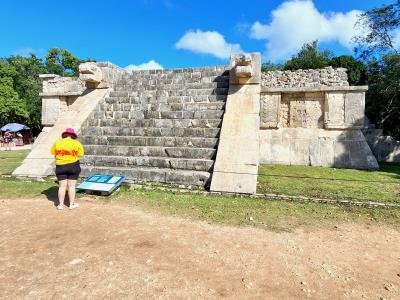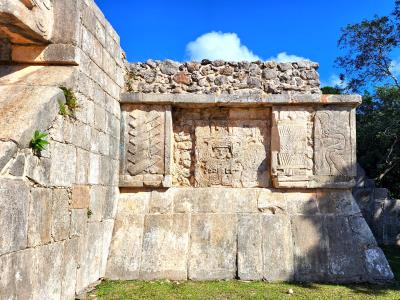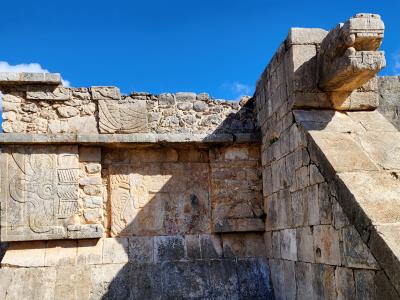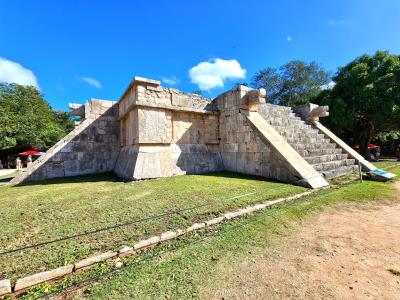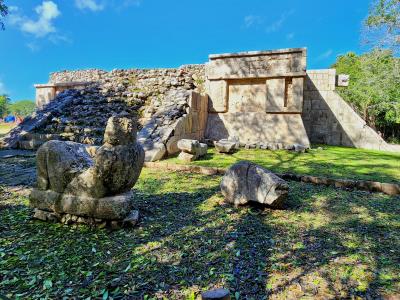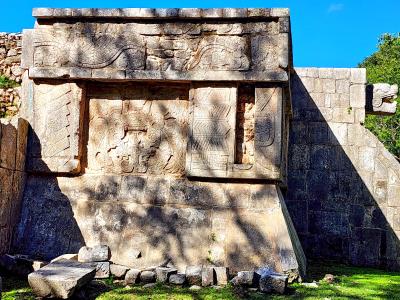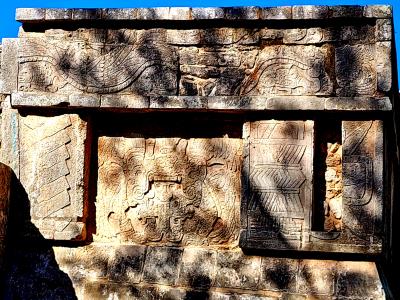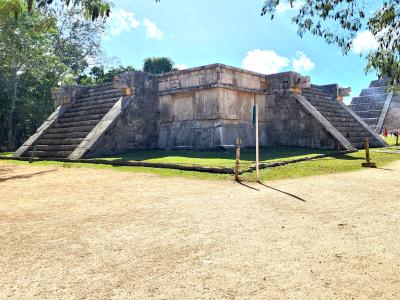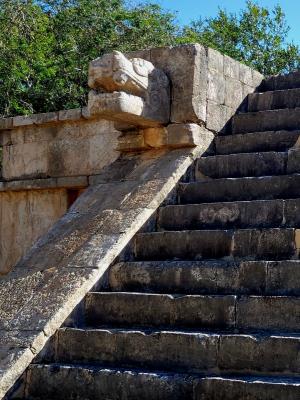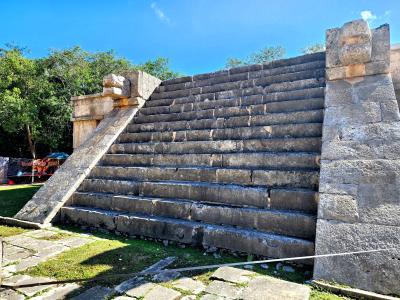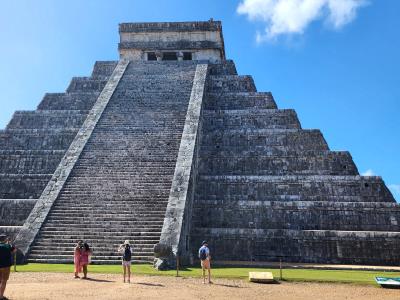Days 14-15 1/24-1/25/2024
Chichén Itzá, Mexico
Frank's Trip
CLICK on any image to enlarge - use mouse cursor to move enlargement it if doesn't fit area
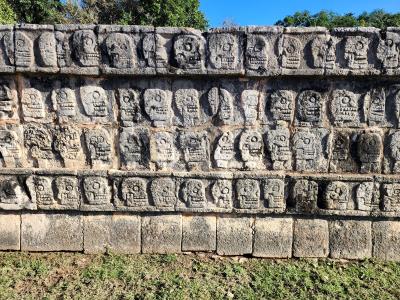
Chichen Itza...
This was my favorite of the Mayan ruin sites I visited. I guess I'm not the only one who thinks so - this site receives about 2.5 million visitors a year. It's big, but easy and pleasant to get around.
My taxi got me there at 7:30 AM and the site opens at 8 AM. It is really good to get there early - the taxi got a great parking place - easy walk for me to the ticket booth, too. There were already a number of tour busses there. By the time we left, there was a HUGE number of tour busses and cars parked in several lots - some quite a distance from the entrance. Despite the ever growing number of people there while I was present (until about Noon) nothing really seemed crowded because it is such a large space.
My final day in the Yucatan was a hassle! Happily, I had seen everything I really wanted to, so there was that. AeroMexico cancelled my flight back to Mexico City and from there on home. They were using a Boeing 737 Max 9 and, of course, it got grounded and left the airline short on planes. I spent a very long time on the phone and finally worked for maybe 2 hours with a Delta representative trying to find a way back for me. In the end I had to take a bus from Merida to Campeche and a taxi to Campeche airport. To be there in time for my flight I had to take a bus arriving at about 1 AM in Campeche for a 6 AM flight. Very long and boring wait at the small Campeche airport for my flight. Then in Mexico City at a little after 8 AM I had a layover until 4:30 PM for my flight to Atlanta. I got back to Gulfport close to Midnight... VERY LONG DAY!

 Chichén Itzá
Chichén Itzá
Chichen Itza is probably the most famous of all the Mayan ruins in Mexico, and it’s also a UNESCO World Heritage Site. It’s an ancient city that was once one of the most powerful in the Mayan Empire. At its peak, around 50,000 people are thought to have lived there.
In 2007 Chichen Itza was declared as one of the "New 7 Wonders of the World" (like the Taj Mahal)
The Great Ball Court
This is the largest ball court in Mesoamerica. Hieroglyphic inscriptions nearby tentatively relate it to the date 864 AD. It has 2 large lateral walls where 2 stone rings are located; these have images of intertwined feathered serpents and the sidewalks in slopes with scenes of sacrifices of ball game players. The relation of the ball game with sacrifices is widely known. The sacrifice was made by beheading and it could be assumed that the scenes represented here refer to mythological or historical facts. There are 2 high walls with sidewalks decorated with reliefs, limiting the court.
The Temples of the Great Ball Game
Both ends of the court (headers) are closed with platforms on which temples are built. The largest of them is at the South, its pillars supported a roof, possibly for protecting from the sun people with high social hierarchy, who watched the show. On the opposite side, the North temple or Temple of the Bearded Man owes its name to a relief of a bearded character. Due to its size, it's likely that its purpose was to hold a very important character or that inside rituals could have taken place before or after matches.
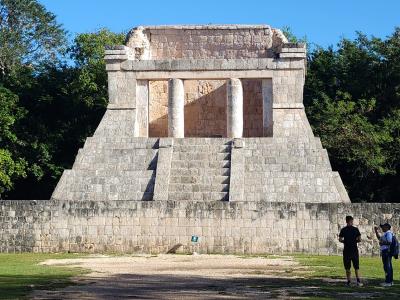
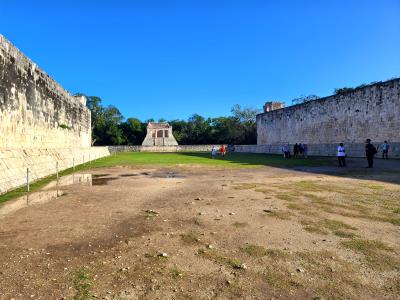
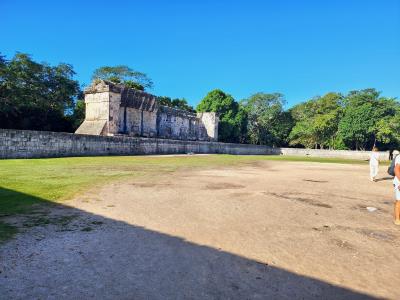
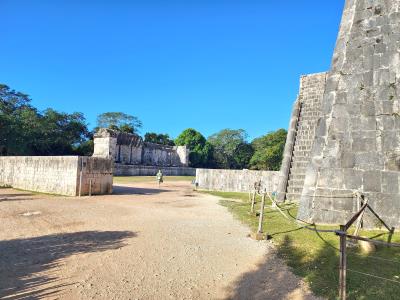
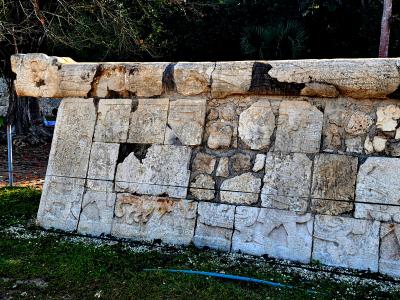
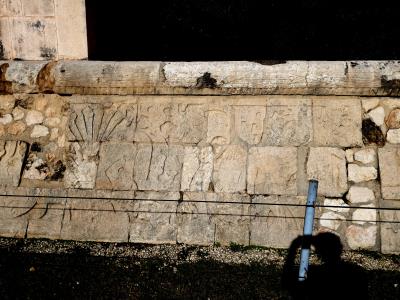
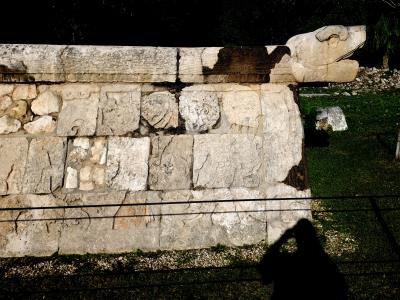
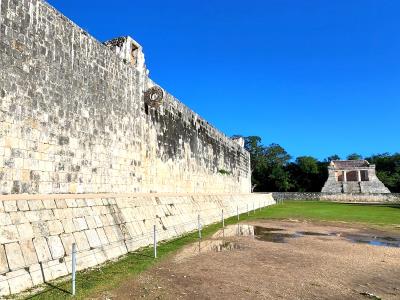
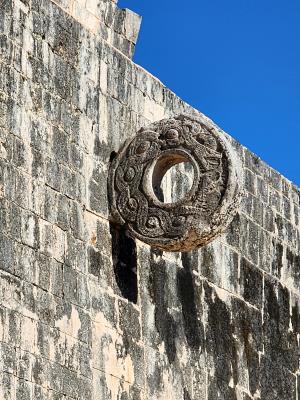
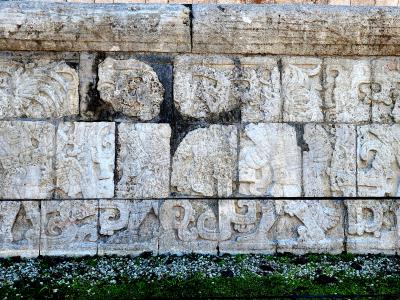
Temple of the Jaguar - East side of court
On the Eastern wall of the court, there is the Temple of Jaguar. The Temple of the Jaguar was built between the years 1000 and 1150. It takes its name from a sequence of jaguars located in front of the structure, it consists of different layers that are intricately carved and show different types of images.
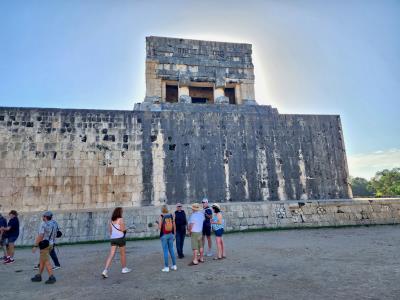
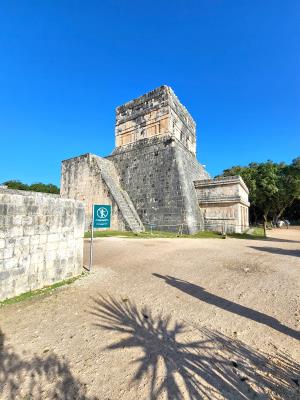
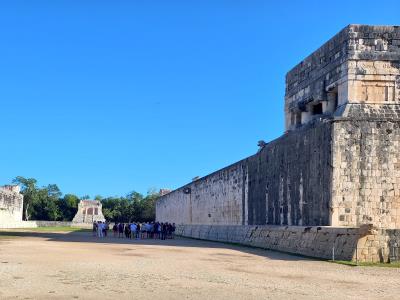
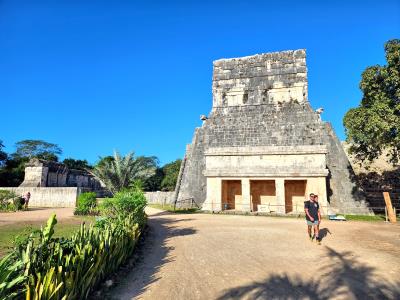
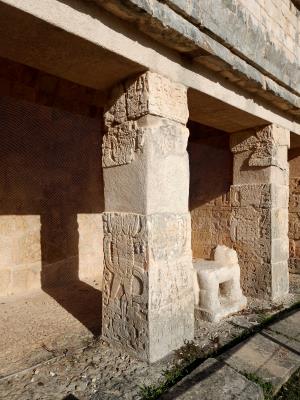
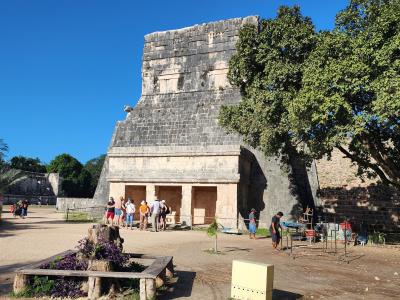
Platform of Eagles and Jaguars
It is a quadrangle platform, quite similar to the Platform of Venus. In the balustrades ascending feathered serpents are represented and in the boards, eagles and jaguars that hold human hearts in their claws. They are about devouring them. This building was dedicated to religious ceremonies. Eagles and jaguars are 2 of the most represented animals in the Mesoamerican iconography.
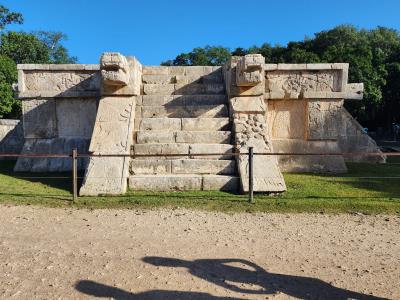

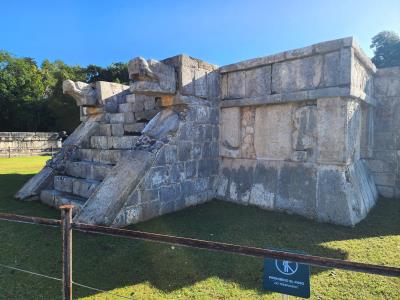
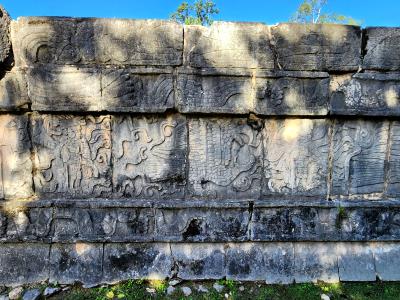
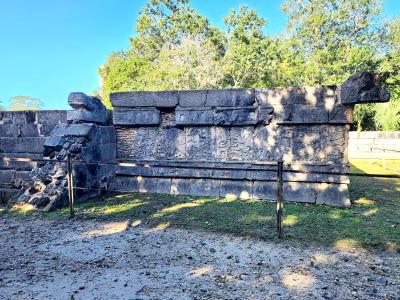
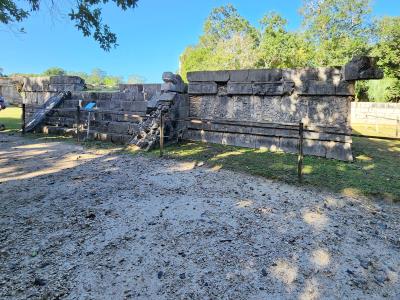
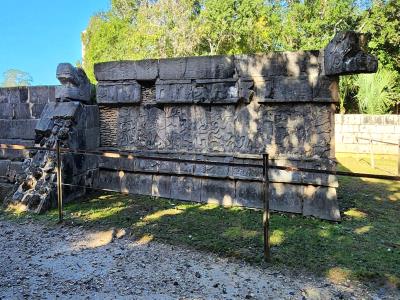
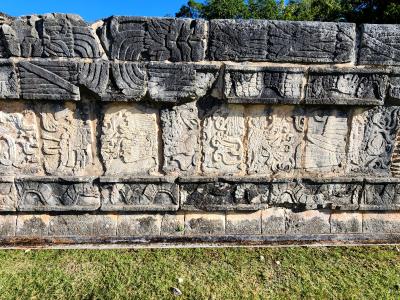
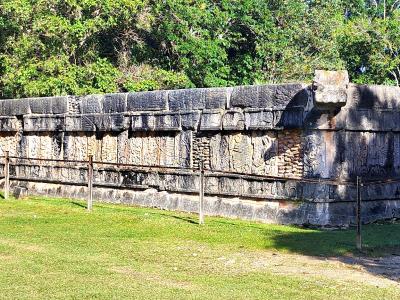
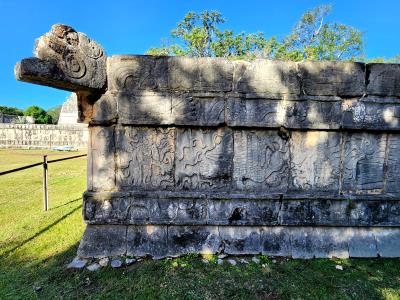
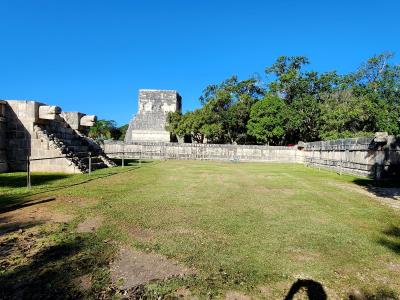

Tzompantli
The Tzompantli. The structure is a large platform whose most notable detail is the placement of the skulls in the bas-relief decoration that gives its name to the structure: The Platform of the Skulls. The base is supported by three paintings decorated with skulls and divided by moldings.
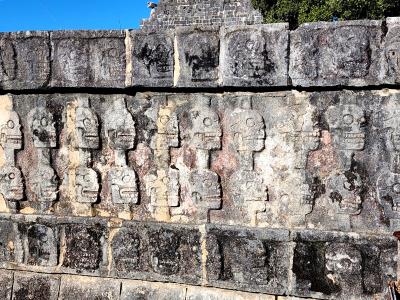

El Castillo / The Castle / Kukulkan Temple
El Castillo is a pyramid that was built to honor the feathered serpent god, Kukulkan. Many of El Castillo’s features reference the Mayan calendar, including 365 stairs (one for each day of the year), 52 panels (one for each week of the year), and 18 terraces (one for each month of the Maya’s 18-month calendar).
There are 9 layered bodies and 4 staircases. The main one is the North side; its balustrades end in 2 large serpent heads with opened jaws. It is crowned by a temple with a main facade that is oriented toward Sacbe 1 that leads to the Sacred Cenote. It is decorated by figure heads of the Big Nose God.
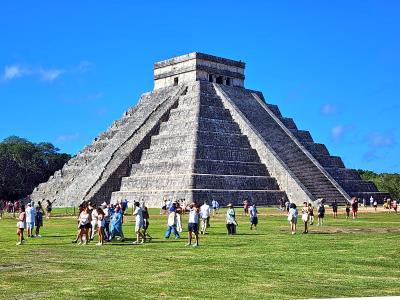
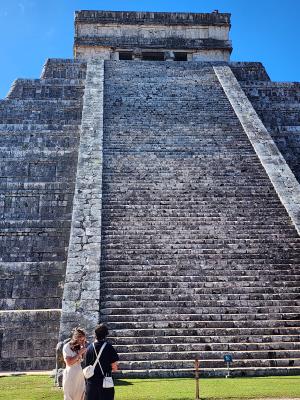
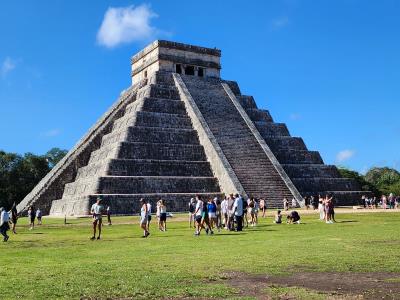
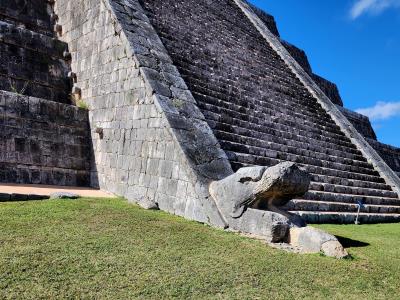
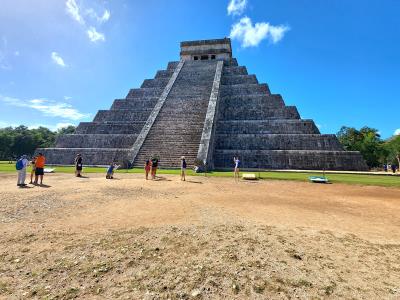
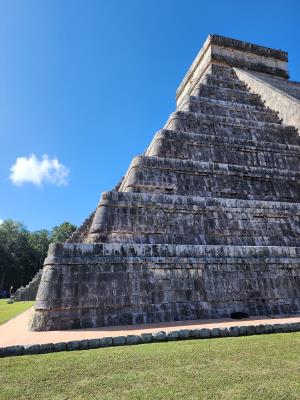
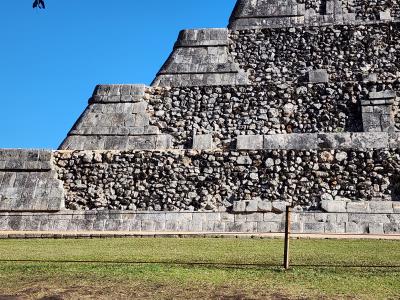
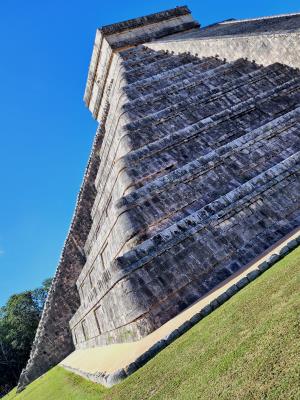
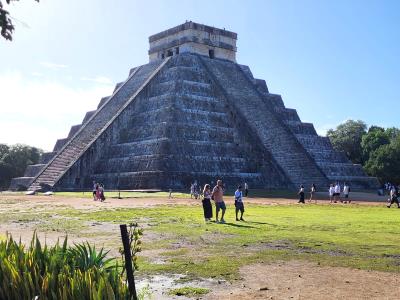
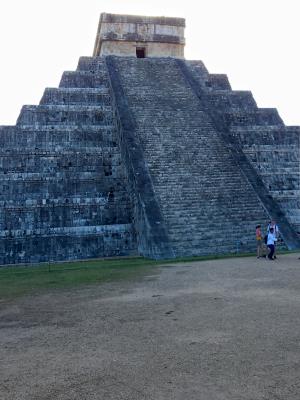
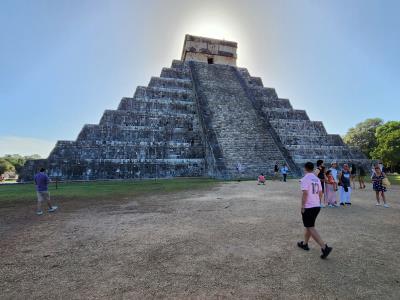
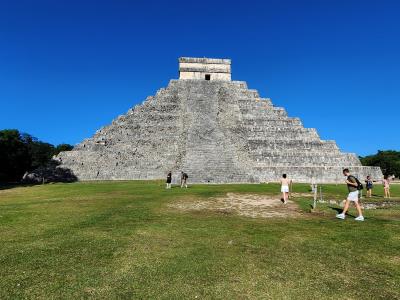
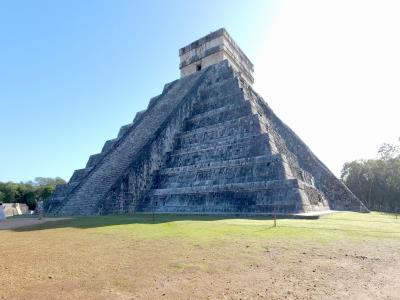
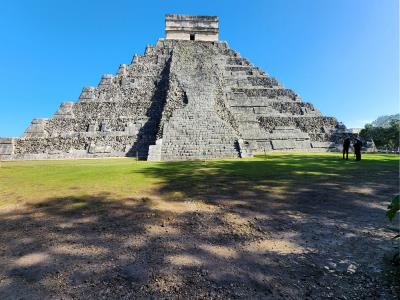
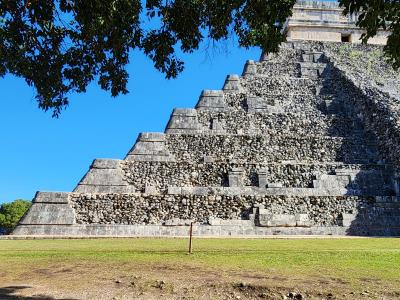
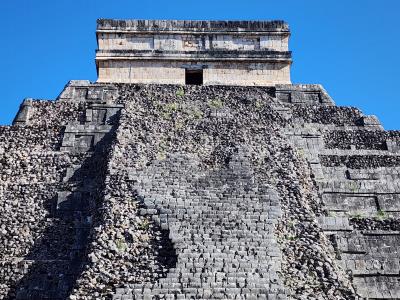
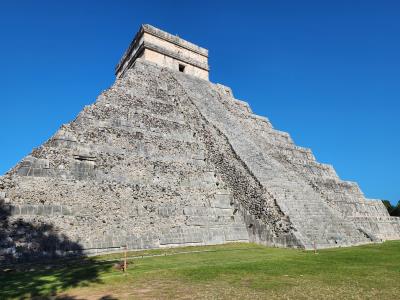
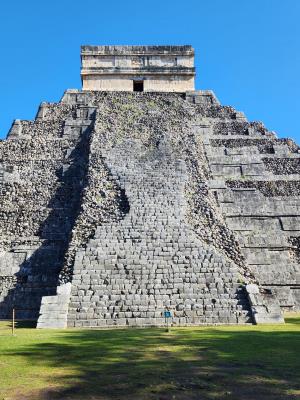
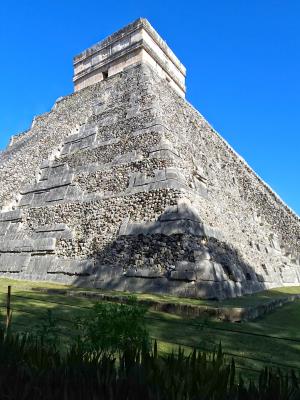
Square of the Thousand Columns
This space has easily controlled access. This innovation allowed having wide, roofed spaces with the purpose of providing refuge to hundreds of pilgrims that went to this place. The decoration consists of war related elements. The city had efficient hydraulic planning. The floor of this structure was completely covered with stucco to facilitate drainage and capture rainwater. During time of site abandonment, small structures were built in this space with elements of the buildings in ruins.
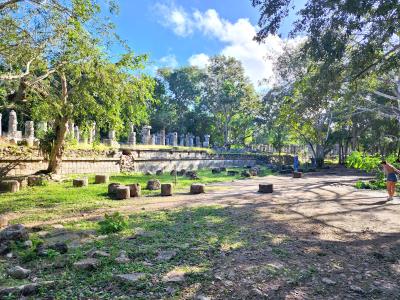
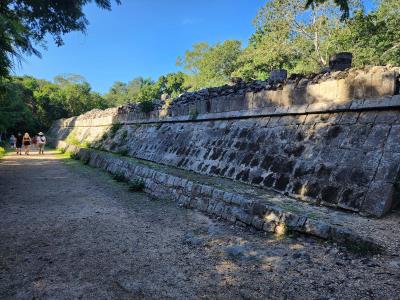
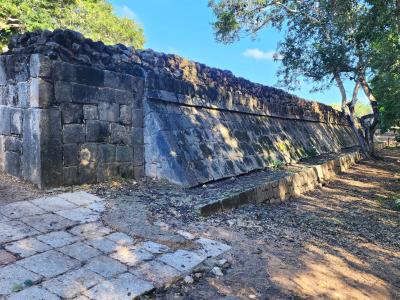
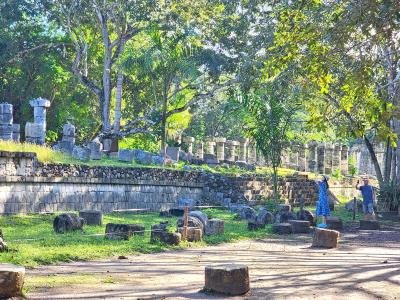
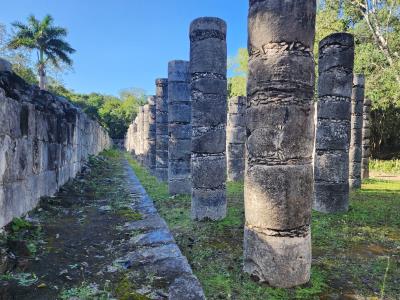
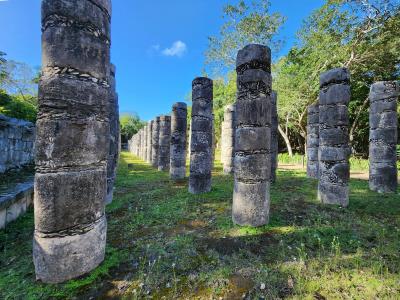
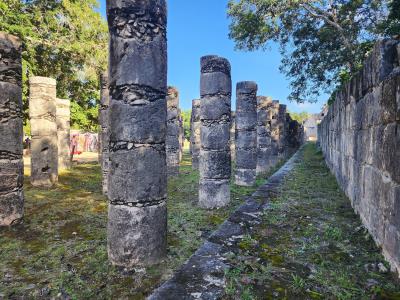
Warriors Temple
The Temple of the Warriors is a structure 40 feet high and 133 feet wide. The central temple shows bas-reliefs of warriors, eagles and jaguars devouring human hearts. In the engravings there are also representations of the god Tlalchitonatiuh and Chaac Mool. All the square columns are carved in bas-relief, with Toltec warriors; in some places they are cemented in sections, painted in bright colors and covered with plaster
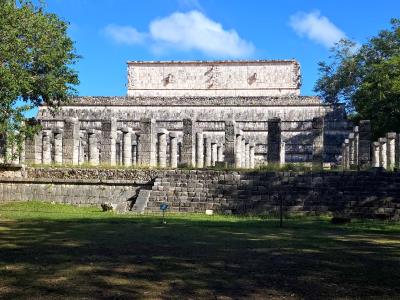
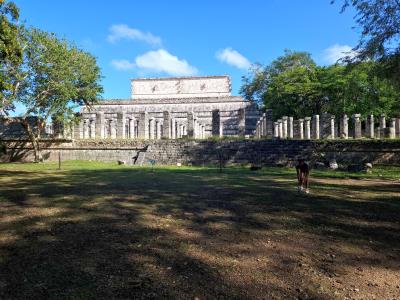
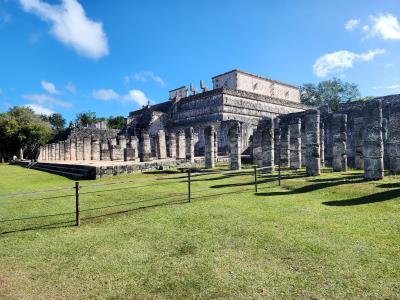
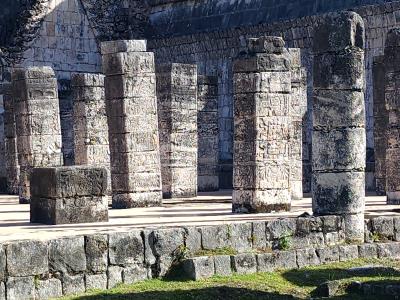
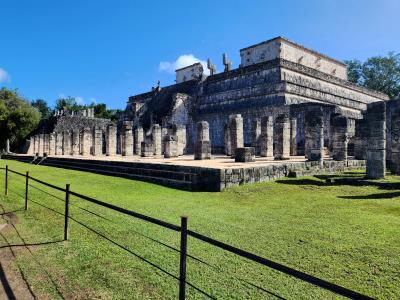
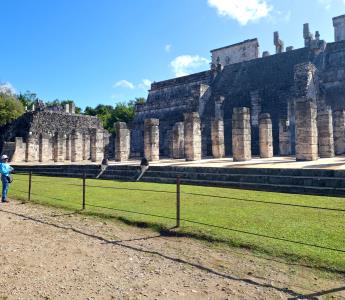
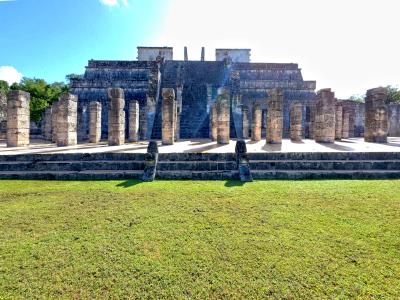
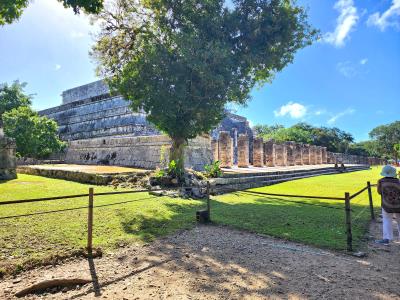
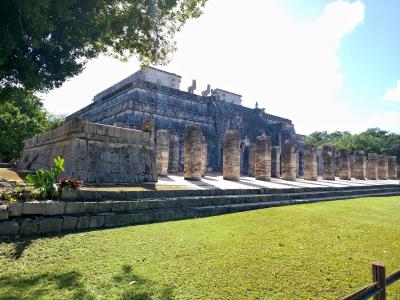
The Ossuary / Tomb of the Great Priest
It is a pyramid of nine stepped blocks and with a staircase on each of the four sides, with balustrades carved with intertwined snakes that lead to a temple at the top, whose entrance proudly displays two columns of snakes.
The pyramid was built over a deep and extensive cavern, into which one can descend from the opening made in the floor of the temple above. At the entrance to the cavern there are seven tombs that contained offerings of jade, rock crystal, shells and copper.
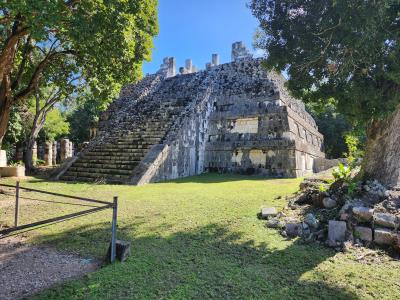
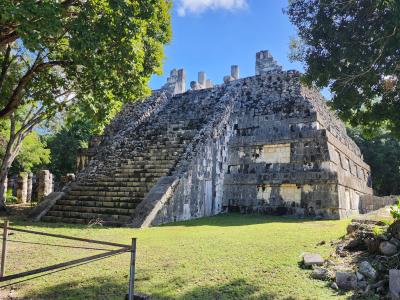
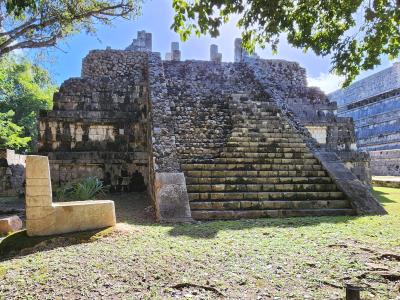
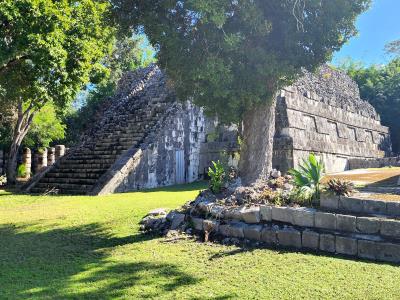
Venus Platform
Staircases at all 4 sides and balustrades that top off in serpent heads. Decor shows feathered serpents with aquatic motifs. There are representations of mythical beings that have been interpreted as the representation of the god Man-Bird-Serpent referring to Kukulkan-Quetzalcoatl as Venus in its phase as the morning star. It is thought this platform was for ceremonies or rituals carried out during pilgrimages - probably dances or plays.
